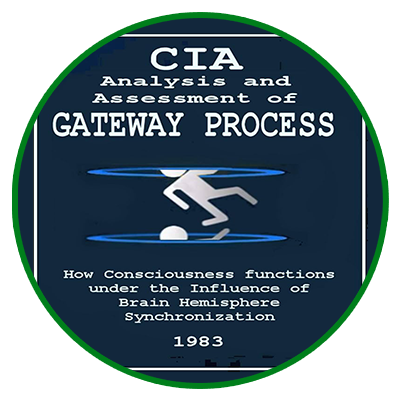
In 2025, XRP has evolved into a cornerstone of institutional blockchain infrastructure. While many cryptocurrencies have chased retail momentum, XRP has stayed focused on reshaping global financial rails from the ground up. Developed by Ripple Labs, the XRP Ledger (XRPL) now facilitates real-time value exchange between banks, fintech platforms, governments, and liquidity providers across borders and currencies.
Unlike volatile, retail-driven assets, XRP has positioned itself as a compliance-first, utility-centric digital currency. Its ability to settle transactions in under five seconds—at a fraction of a penny—makes it indispensable for high-volume, low-margin payment environments such as remittances, forex settlement, and CBDC interoperability.
From bridging U.S. dollars with Philippine pesos to enabling experimental digital dollars within Federal Reserve sandboxes, XRP is quietly powering a paradigm shift in how money moves around the world: fast, cheap, interoperable, and transparent. As traditional finance wakes up to the speed and efficiency of blockchain, XRP is no longer speculative—it’s foundational.
? Why XRP Stands Out
XRP isn’t just fast and affordable—it’s engineered for institutional-grade scale. At its core, the XRP Ledger (XRPL) is designed to function as a global liquidity protocol for regulated financial systems.
⚡ Instant Settlement & Low Cost
Transactions on XRPL finalize in 3–5 seconds and cost fractions of a cent. This speed and cost-efficiency are critical for high-frequency financial environments, such as corporate treasury operations and international payments. Unlike blockchains that rely on mining or staking, XRPL leverages a unique consensus protocol that minimizes energy use and maximizes throughput.
? Regulation-Ready by Design
XRP’s architecture is regulatory-first. From built-in compliance features to Ripple’s proactive legal positioning, the network was designed to meet the needs of central banks, financial regulators, and licensed payment providers. Ripple’s landmark legal wins and expanding government partnerships solidify XRP’s role in the future of regulated digital finance.
? Deep Interoperability and Liquidity Routing
Through native support for tokenized assets and the Interledger Protocol (ILP), XRPL seamlessly connects digital currencies, fiat systems, and cross-chain environments. Whether issuing a stablecoin, bridging CBDCs, or routing forex trades between global banks, XRP enables fluid movement of value across the financial spectrum.
These combined traits make XRP not just relevant—but essential—for institutions building the next generation of cross-border, real-time payment networks.
?? Real-World Use Cases in the U.S.
XRP’s real-world adoption in the United States reflects its shift from speculation to utility — especially in sectors where speed, compliance, and cost-efficiency are non-negotiable.
1. RippleNet and U.S. Banks
Regional and mid-sized American banks, including cross-border institutions, have integrated RippleNet to enhance payment efficiency across the Americas and Asia-Pacific. These banks have reported a measurable drop in overhead by removing the need to pre-fund nostro accounts, simplifying liquidity management, and streamlining FX conversion.
2. Federal Reserve & Digital Dollar Research
Ripple is engaged with U.S. policymakers and sandbox programs helping to shape digital currency frameworks. XRP’s performance, compliance structure, and Interledger integration make it a strong infrastructure layer for hypothetical digital dollar issuance and programmable money pilots.
3. Remittance Providers Using ODL
Leading U.S.-based money transfer companies such as MoneyGram, Western Union, and newer fintech players have adopted Ripple’s On-Demand Liquidity (ODL) for corridors with Mexico, the Philippines, and India. ODL’s ability to eliminate intermediaries and execute real-time FX settlements has helped these providers lower fees, speed up delivery, and enhance transparency — a game-changer in remittances where timing and trust are everything.
? Use Cases Across Industries
XRP’s real-world utility goes far beyond traditional banking and remittances. Its architecture, performance, and regulatory alignment make it a powerful tool across diverse sectors seeking digital transformation.
- Remittances & Forex: Instant, low-cost cross-border payments without intermediaries or pre-funded accounts—ideal for migrant workers and international payroll.
- Trade Finance & Supply Chain: Smart tokenization of invoices and letters of credit allows for seamless B2B settlement, improved transparency, and reduced counterparty risk.
- CBDC & Digital Currency Interoperability: XRP serves as a neutral bridge asset between siloed CBDC networks and commercial payment systems, enabling seamless liquidity movement.
- Micropayments & Content Monetization: Content platforms and media services leverage XRPL’s speed for pay-per-click, real-time streaming payments, and decentralized creator economies.
- Stablecoin Infrastructure: Regulated issuers can deploy stablecoins directly on XRPL and use XRP for liquidity and cross-chain transfers in a compliant, high-performance environment.
- Insurance & Risk Settlements: Instant payout models for parametric insurance and risk mitigation using smart hooks and conditional triggers on XRPL.
From fintech to supply chains, content platforms to CBDCs—XRP is proving itself as a flexible, secure layer for enterprise-grade tokenization and payment workflows.
? Technical Analysis (As of Today)
- Price: $0.52 (subject to live updates)
- Support Levels: $0.48 (short-term), $0.42 (major structural support)
- Resistance Levels: $0.58 (short-term breakout zone), $0.63 (macro barrier)
- RSI (Relative Strength Index): 47.2 — Neutral zone, suggesting consolidation
- MACD: Approaching a bullish crossover, indicating possible momentum shift
- Chart Structure: Forming a symmetrical triangle pattern on the daily timeframe
XRP is hovering around a key technical pivot with neutral momentum. A confirmed breakout above $0.58, supported by rising volume, could initiate a short-term bullish trend with targets toward $0.63–$0.70. However, failure to hold current support may trigger a retest of the $0.42 accumulation zone, which has historically provided strong buying interest. Watch for volume spikes and RSI divergence to validate trend direction.
? Price Prediction: 2025–2027
XRP’s long-term price trajectory will be shaped by macroeconomic factors, regulatory clarity, Ripple’s legal positioning, and the continued integration of XRPL into global payment systems. Below are forward-looking projections based on current developments and institutional momentum.
?️ 2025
- Baseline Forecast: $1.10 – $1.60
Supported by the growth of ODL corridors, increased RippleNet integration, and moderate CBDC exploration. - Bullish Scenario: Up to $2.50
Possible if the SEC case resolves fully in Ripple’s favor and U.S. regulatory frameworks greenlight digital asset usage across banking.
?️ 2026
- Baseline Forecast: $1.80 – $2.50
Driven by full deployment of XRPL’s AMM protocol, early-stage CBDC integrations, and increased global institutional demand. - Bullish Scenario: $3.20+
If XRP becomes embedded into live central bank infrastructure and used in real-time FX and cross-border treasury settlements.
?️ 2027
- Baseline Forecast: $2.20 – $3.50
Reflecting continued XRPL ecosystem growth, especially in DeFi, NFTs, and tokenized real-world assets. - Bullish Scenario: $5.00+
Contingent on mass adoption across multiple jurisdictions for CBDCs, deepened private-public sector cooperation, and global remittance reliance on RippleNet.
These forecasts are speculative and depend heavily on regulation, technology rollouts, and market sentiment. Still, XRP’s growing institutional relevance gives it a compelling long-term use case that few assets can rival.
XRP Roadmap: 2025–2026
The XRP Ledger is evolving beyond payments into a fully programmable infrastructure layer for the global financial system. The 2025–2026 roadmap is focused on enabling smart functionality, unlocking liquidity, and deepening government collaborations.
1. AMM (Automated Market Maker) Integration
XRP Ledger will activate its native AMM module, creating decentralized liquidity pools for assets issued on XRPL. This feature will enable real-time swaps, yield-generating strategies, and algorithmic FX within a permissionless yet compliance-friendly ecosystem.
2. Hooks Framework
Hooks will bring lightweight, low-gas smart contract logic directly to the base layer of XRPL. These event-based scripts allow developers to create features like fee control, multi-signature triggers, custom escrow, or regulatory filters without the need for external smart contract platforms.
3. CBDC Pilot Expansion
Ripple is advancing from proof-of-concept to pilot stages with several central banks. Focus is on using XRP Ledger for issuing, distributing, and settling retail and wholesale CBDCs. Pilots in Bhutan, Montenegro, and other jurisdictions are exploring interbank payments, offline digital cash, and real-time cross-border liquidity.
This roadmap reinforces XRP’s core mission—becoming the most robust, efficient, and programmable infrastructure layer for global finance.
Ecosystem Momentum
XRP’s ecosystem has matured into one of the most institutionally-integrated frameworks in the blockchain industry. Backed by Ripple’s infrastructure and global partnerships, the XRPL continues to expand across finance, tech, and public sectors.
- Over 300 financial institutions are live or piloting RippleNet integrations
- Active CBDC pilots with governments in Bhutan, Montenegro, Colombia, and others
- $1 billion XRPL Grants Program funding developers, startups, and fintech integrations
- Expanding support for NFTs, tokenized assets, and decentralized identity projects
- The XRPL DEX is growing steadily with increased liquidity, trade volume, and UX tooling
Combined, these developments position XRP as a platform not only for payment rails, but also for programmable financial infrastructure.
Final Thoughts: XRP Is the Backbone of Institutional-Grade Blockchain
XRP has transcended its origins as a digital asset and become an institutional-grade foundation for the future of money movement. In an era of regulatory uncertainty and fragmentation, XRP offers something rare—clarity, stability, and real-world traction.
By delivering real-time value transfer across borders, integrating into central bank experiments, and enabling tokenized finance with compliance-first design, XRP bridges the gap between traditional finance and the blockchain economy. It is no longer a speculative play—it is mission-critical infrastructure.
Whether you’re a central bank designing a digital currency, a fintech optimizing liquidity, or a global corporation modernizing its treasury, XRP provides the reliability, performance, and ecosystem to scale securely.
? Learn more at https://ripple.com/xrp


